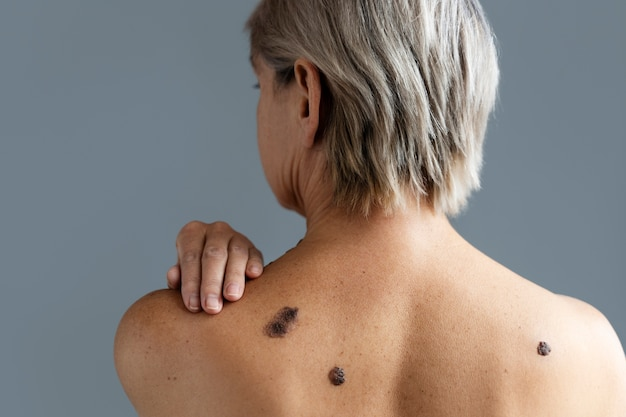We all have spots or marks on our skin known as moles. But there are some skin spots that can lead to serious issues. Moles and melanoma are often confused, but knowing their differences is crucial. A common mole is usually harmless, while melanoma is a type of skin cancer that can be dangerous. Understanding these differences can help you act in time. Especially in India, where awareness of skin cancer is rising, recognizing these differences is vital. People are encouraged to check their skin regularly to catch complications early.
Understanding Moles and Risk Factors
Moles are small clusters of skin cells called melanocytes. These are usually brown and round or oval. Most moles are benign, meaning they don’t cause harm. They can appear anywhere on the skin. Normal moles are safe, but we should be aware of unusual ones. Some people have atypical moles called dysplastic nevi. These are larger and may look different from regular moles.
Why do some people have more moles? It often comes down to genetics. If a family member has many moles, you might too. Exposure to the sun is also a big factor. Spending a lot of time in the sun without protection can lead to more moles.
Having over 50 moles can increase the risk of skin problems. It’s like having extra freckles that need to be watched. If you have many moles, you should be more alert. Knowing the difference between birthmark and melanoma can also guide you in keeping safe. Regular checks help identify changes early.
Introducing Melanoma: Recognizing the Threat
Melanoma is a type of skin cancer. It’s known for being more aggressive than other skin cancers. This means it grows and spreads faster. Recognizing symptoms of melanoma skin cancer early can save lives. Catching it early greatly improves the chances of treatment success.
Your lifestyle affects your skin health. Spending too much time in the sun increases melanoma risk. So does using tanning beds. These habits can damage skin and lead to cancer.
Regular screenings and self-exams are key for staying healthy. Keep an eye on your skin and think about scheduling checks with a professional. Look for melanoma symptoms like a new or changing mole.
Differential Diagnosis: Moles vs. Melanoma
Visually, birthmark vs melanoma look different. Moles are usually uniform in color and size, while early signs of melanoma cancer include uneven color or shape.
Use the “ABCDE” method to examine your skin. This stands for:
- Asymmetry: One half of the mole doesn’t match the other.
- Border: Look for edges that are irregular or poorly defined.
- Color: More than one shade in the mole is a warning.
- Diameter: Bigger than a pencil eraser? Keep watch.
- Evolving: If it changes size, shape, or color, it’s a red flag.
These are symptoms of melanoma cancer that need attention. Other warning signs include itching or bleeding. If you notice these, it’s time to see a doctor.
Empowerment Through Prevention and Action
Prevent health issues by protecting your skin from too much sun. Here are steps to reduce risk: 1. Apply sunscreen with at least SPF 30 every two hours when outside. 2. Wear protective clothing like hats and long sleeves. 3. Avoid sun exposure during peak hours, usually between 10 a.m. and 4 p.m.
Regular self-checks are also smart. Conduct monthly examinations of your skin to catch early melanoma symptoms. Look for changes in size, color, or shape. You can’t replace professional exams, though. Schedule them regularly, especially if you’re at high risk.
Taking these simple measures can make a world of difference. Remember, knowing the difference between birthmark and melanoma, watching for early signs of melanoma, and acting early can help maintain healthy skin.

